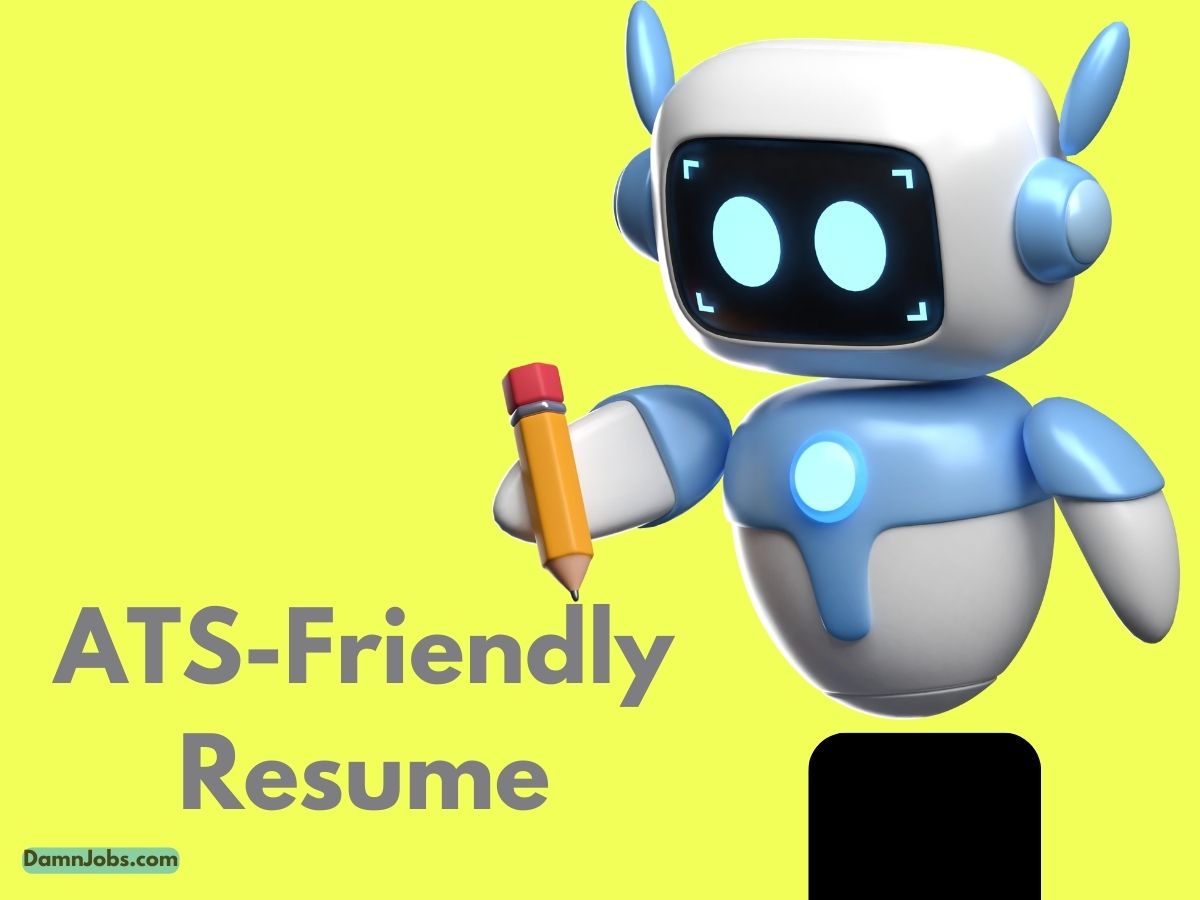ATS-Friendly Resume Formatting Tips: How to Get Your Resume Past the Bots and Into Human Hands
In today’s job market, many companies use Applicant Tracking Systems (ATS) to filter resumes before they even reach human eyes.
These systems help employers manage large volumes of applications by scanning resumes for specific keywords and formatting.
To increase your chances of getting noticed, it’s crucial to make your resume ATS-friendly.
Here are some practical tips to ensure your resume gets past the bots and into human hands.
1. Use a Simple, Clean Layout
Avoid Complex Designs and Graphics
ATS software often struggles with complex designs, images, and graphics. Stick to a simple, clean layout with standard fonts and straightforward formatting. Use traditional headings and bullet points to make your resume easy to read and parse.
Example:
Name: John Doe
Address: 123 Main Street, City, State, ZIP
Phone: (123) 456-7890
Email: john.doe@example.com
Stick to Standard Fonts
Choose standard, easily readable fonts such as Arial, Calibri, or Times New Roman. Avoid fancy fonts or unusual characters that might not be recognized by the ATS.
Example:
- Font Choice: Calibri or Arial
- Font Size: 10-12 points
2. Use Standard Headings
Employ Common Section Titles
ATS systems often look for specific headings to identify sections of your resume. Use standard titles such as “Work Experience,” “Education,” and “Skills.” Avoid creative or unconventional headings.
Example:
- Work Experience (instead of “Career Journey”)
- Education (instead of “Academic Background”)
Keep Headings Consistent
Ensure that your headings are consistently formatted throughout your resume. This helps the ATS correctly categorize each section.
Example:
Work Experience
Education
3. Incorporate Keywords from the Job Description
Analyze the Job Posting
Carefully read the job description and identify key skills, qualifications, and industry-specific terms. Incorporate these keywords into your resume, especially in the “Skills” and “Work Experience” sections.
Example:
If the job posting mentions “project management” and “budget oversight,” make sure these terms appear in your resume if relevant to your experience.
Use Keywords Naturally
Integrate keywords naturally into your resume content. Avoid keyword stuffing, which can make your resume sound artificial and may not be effective with ATS systems.
Example:
- Work Experience: Managed multiple projects simultaneously, overseeing budgets and timelines to ensure successful completion.
4. Optimize Your Skills Section
List Relevant Skills
Include a “Skills” section that lists relevant skills and competencies. Be specific and use terms that match those used in the job description.
Example:
Skills:
- Project Management
- Budget Oversight
- Team Leadership
- Data Analysis
Avoid Overloading with Skills
Don’t overload your skills section with irrelevant or generic skills. Focus on the skills that are most relevant to the position you’re applying for.
Example:
- Relevant Skills: Advanced Excel, Strategic Planning, Budget Management
- Less Relevant Skills: Basic Computer Skills (if not specified in the job description)
5. Use Bullet Points for Job Descriptions
Organize Content with Bullet Points
Bullet points help break down information and make it easier for both ATS systems and human readers to scan your resume. Use bullet points to list your achievements and responsibilities in each role.
Example:
Work Experience
Project Manager, ABC Corp
January 2020 – Present
- Led cross-functional teams to deliver projects on time and within budget.
- Improved project efficiency by 20% through streamlined processes.
Start with Action Verbs
Begin each bullet point with a strong action verb to highlight your achievements and responsibilities effectively.
Example:
- Developed and implemented new project management strategies.
- Increased team productivity by 25% through process improvements.
6. Ensure Proper File Formatting
Save Your Resume as a .docx or .pdf
ATS systems are generally compatible with .docx and .pdf file formats. Save your resume in one of these formats to ensure it’s readable by the ATS.
Example:
- Preferred Formats: .docx, .pdf
- Avoid Formats: .jpg, .png, .html
Use a Standard File Name
Name your resume file in a straightforward manner, including your name and the word “resume.” Avoid using special characters or overly complex file names.
Example:
- File Name: John_Doe_Resume.docx
7. Test Your Resume for ATS Compatibility
Use ATS Resume Checker Tools
Several online tools can help you test how your resume fares with ATS systems. These tools analyze your resume and provide feedback on how to improve it for better compatibility.
Example:
- Tools: Jobscan, ResumeWorded, or the ATS resume checker on Indeed.
Review and Revise
After using an ATS checker, review the feedback and revise your resume accordingly to improve its chances of passing through the system.
Example:
- Feedback Example: Include more keywords related to “data analysis” if it’s relevant to the job.
Conclusion
Creating an ATS-friendly resume is essential for ensuring that your application gets past the bots and into the hands of hiring managers.
By using a simple, clean layout, standard headings, relevant keywords, and optimized skills sections, you can improve your chances of making it through the initial automated screening.
Additionally, testing your resume with ATS tools and saving it in the right format can further enhance its compatibility.
With these tips, you’ll be better equipped to stand out in the digital age and secure that important job interview.

